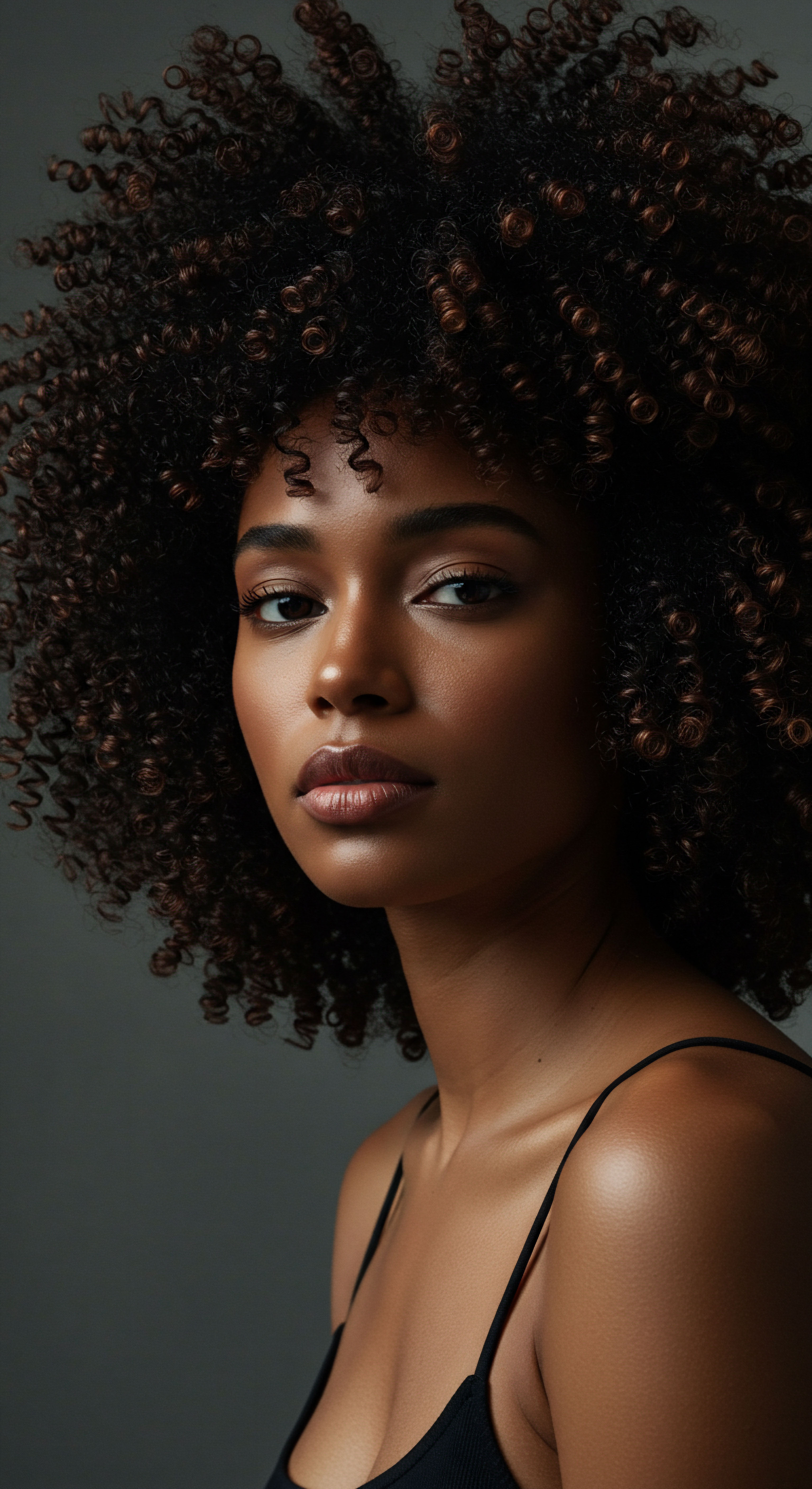
Roots
Consider for a moment the quiet strength residing within each strand of textured hair, a marvel of natural architecture shaped by millennia of heritage and adaptation. This intrinsic beauty, however, exists within a world increasingly marked by invisible assailants ❉ the very air we breathe. A profound question often arises in spaces dedicated to the care of these remarkable strands ❉ Are specific textured hair types more susceptible to the challenges presented by our atmospheric surroundings?
To truly grasp the intricate interplay between air quality and textured hair, we must first appreciate the fundamental design of hair itself. Each strand, whether tightly coiled or gently wavy, possesses a core structure of keratin proteins, encased by a protective outer layer known as the Cuticle. This cuticle, composed of overlapping scales, acts as the hair’s first line of defense against the external world. The way these scales lie, whether flat and smooth or more raised, plays a significant role in how hair interacts with its environment.

Hair Anatomy and Environmental Interaction
Hair, in its essence, is a complex biological fiber. Its outermost shield, the cuticle, can be thought of as a natural armor. In many textured hair types, the cuticle layers tend to be more lifted or possess more gaps along the helical path of the strand.
This characteristic, while contributing to the hair’s distinctive appearance and ability to hold certain styles, also presents a unique surface for environmental elements. Fine particulate matter, gases, and other atmospheric constituents can find more points of contact or even ingress.
The architectural nuances of textured hair, particularly its cuticle, suggest a unique interaction with environmental elements.
Beyond the cuticle, the cortex holds the hair’s primary protein structures and melanin, the pigment responsible for color. Environmental stressors, especially air pollutants, initiate a chain of events that can reach these inner layers. Oxidative stress, a process where unstable molecules known as free radicals damage cells, stands as a central mechanism through which air pollution affects hair. These reactive species, generated by various internal and external factors, target hair proteins and the cells that produce melanin, potentially leading to alterations in strand integrity and color over time.
Understanding the specific classifications of textured hair also helps to contextualize its interaction with the environment. While classifications vary, they generally account for curl pattern, density, and strand diameter. Each variation presents a slightly different surface area and structural arrangement, which could influence the deposition and adherence of airborne particles. A denser arrangement of coils, for instance, might create more surface area for pollutants to settle upon, or conversely, offer a degree of self-protection by physically shielding inner strands.

How Does Air Pollution Affect Hair Structure?
Air pollution, a pervasive concern in our contemporary world, comprises a cocktail of particulate matter, gaseous pollutants like nitrogen dioxide and sulfur dioxide, heavy metals, and volatile organic compounds. These elements do not simply pass over hair; they actively engage with it.
- Particulate Matter ❉ Tiny airborne fragments, such as PM2.5 and PM10, can settle directly onto the hair surface and scalp. Their presence contributes to a dull appearance and can even clog hair follicles.
- Gaseous Pollutants ❉ Substances like ozone and nitrogen dioxide contribute to oxidative damage, weakening hair proteins and affecting the scalp’s delicate balance.
- Heavy Metals ❉ These elements, often found in industrial emissions, can accumulate on hair strands, acting as bioindicators of environmental exposure. Their presence can exacerbate oxidative stress.
The consequences of this interaction are tangible. Hair exposed to higher concentrations of pollutants often shows signs of structural degradation. This includes a roughened surface, increased brittleness, and a propensity for breakage. The protective lipid layer on the hair’s exterior, essential for moisture retention and sheen, can also be compromised.
Moreover, research indicates that air pollutants can suppress the production of vital proteins responsible for hair growth. A study presented at the 28th European Academy of Dermatology and Venereology Congress demonstrated that exposure of human follicle dermal papilla cells to particulate matter and diesel particulates led to a notable reduction in levels of beta-catenin, a protein essential for hair formation, alongside other growth-related proteins like cyclin D1, cyclin E, and CDK2. This suggests a direct impact on the very mechanisms that sustain healthy hair cycles.

Ritual
As we step from the foundational understanding of hair’s composition into the realm of daily practice, a sense of practical wisdom begins to unfold. The rhythms of care, the deliberate choices made each day, stand as our response to the atmospheric challenges we have come to recognize. How, then, do our styling practices and routines interact with the presence of air quality concerns, and what adaptive measures might we consider to support textured hair in this environment?
The unique structural qualities of textured hair, with its varied curl patterns and often more porous nature, mean that it can respond differently to external factors compared to straighter hair types. This inherent porosity, while allowing for greater absorption of beneficial moisture and conditioning agents, also presents a pathway for environmental pollutants to settle upon and potentially penetrate the hair shaft. When hair is more prone to dryness, as textured hair often is, its outer cuticle layers may be more raised, creating additional sites for particulate matter and other atmospheric aggressors to cling.
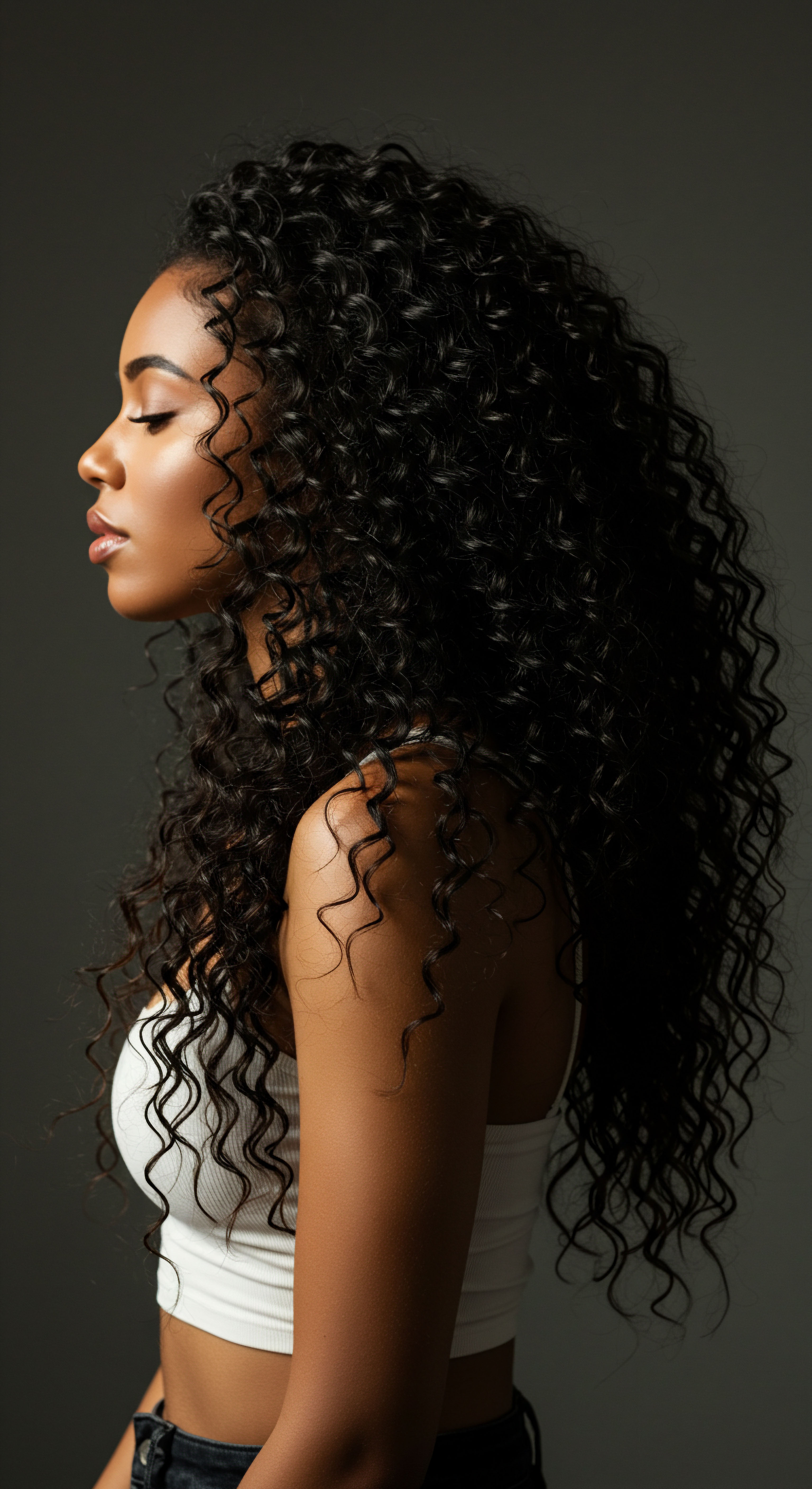
Can Daily Styling Choices Influence Vulnerability?
Our daily styling choices and product applications play a significant role in how textured hair navigates environmental stressors. The very act of preparing our hair can either bolster its defenses or inadvertently leave it more exposed. For instance, the use of certain emollients or stylers, while wonderful for defining curls and adding luster, could theoretically act as a magnet for airborne dust and fine particles, holding them closer to the hair shaft and scalp. Conversely, well-formulated products can create a protective veil.
Thoughtful product selection and styling practices can create a protective shield for textured hair against environmental stressors.
Consider the diverse array of protective styles common within textured hair communities. Braids, twists, and buns, beyond their aesthetic and practical benefits, offer a physical barrier. By gathering and securing the hair, these styles reduce the direct surface area exposed to the ambient air. This can limit the deposition of particulate matter and minimize direct contact with gaseous pollutants, offering a simple yet effective line of defense.
| Characteristic Cuticle Layer |
| Relevance to Pollution More lifted in textured hair, potentially allowing greater pollutant deposition. |
| Protective Action Sealing cuticles with emollients or protective styles. |
| Characteristic Porosity |
| Relevance to Pollution Higher porosity may lead to increased absorption of airborne substances. |
| Protective Action Using leave-in conditioners and sealants. |
| Characteristic Surface Area |
| Relevance to Pollution Denser curl patterns present more surface area for particle adhesion. |
| Protective Action Protective styles reduce exposed surface area. |
| Characteristic Moisture Content |
| Relevance to Pollution Textured hair is often drier, making it more prone to external damage. |
| Protective Action Consistent hydration and moisture retention strategies. |
| Characteristic Understanding these interactions informs our approach to hair protection. |

What Cleansing Practices Best Support Hair in Polluted Environments?
Cleansing becomes a paramount ritual in environments with compromised air quality. The goal extends beyond simply removing product buildup; it involves gently lifting away accumulated pollutants without stripping the hair of its natural oils. Frequent, yet gentle, washing with appropriate cleansers can prevent the long-term adherence of particulate matter and chemical residues that contribute to oxidative stress and hair damage.
Selecting shampoos formulated to remove pollutants, sometimes containing chelating agents that help bind to and wash away heavy metals, can be beneficial. Following cleansing with a deeply conditioning treatment helps to replenish moisture and restore the hair’s protective barrier, which might be compromised by environmental exposure. This replenishment is particularly significant for textured hair, which relies heavily on a healthy moisture balance for its resilience and appearance.
- Regular Cleansing ❉ Washing hair regularly helps to remove accumulated pollutants, preventing their prolonged contact with the hair and scalp.
- Chelating Agents ❉ Shampoos with ingredients that bind to heavy metals can aid in their removal from the hair shaft.
- Deep Conditioning ❉ Restoring moisture and lipid content after cleansing helps to fortify the hair’s natural defenses against environmental stressors.
The interplay between air quality and hair health extends to the scalp. Pollutants settling on the scalp can cause irritation, itching, and even contribute to conditions such as sensitive scalp syndrome. Therefore, a holistic cleansing ritual considers both the hair strands and the underlying scalp, ensuring a clean and balanced environment for healthy growth. Practices that support scalp health, such as gentle massage during washing and the use of soothing scalp treatments, further aid in mitigating the adverse effects of environmental exposure.
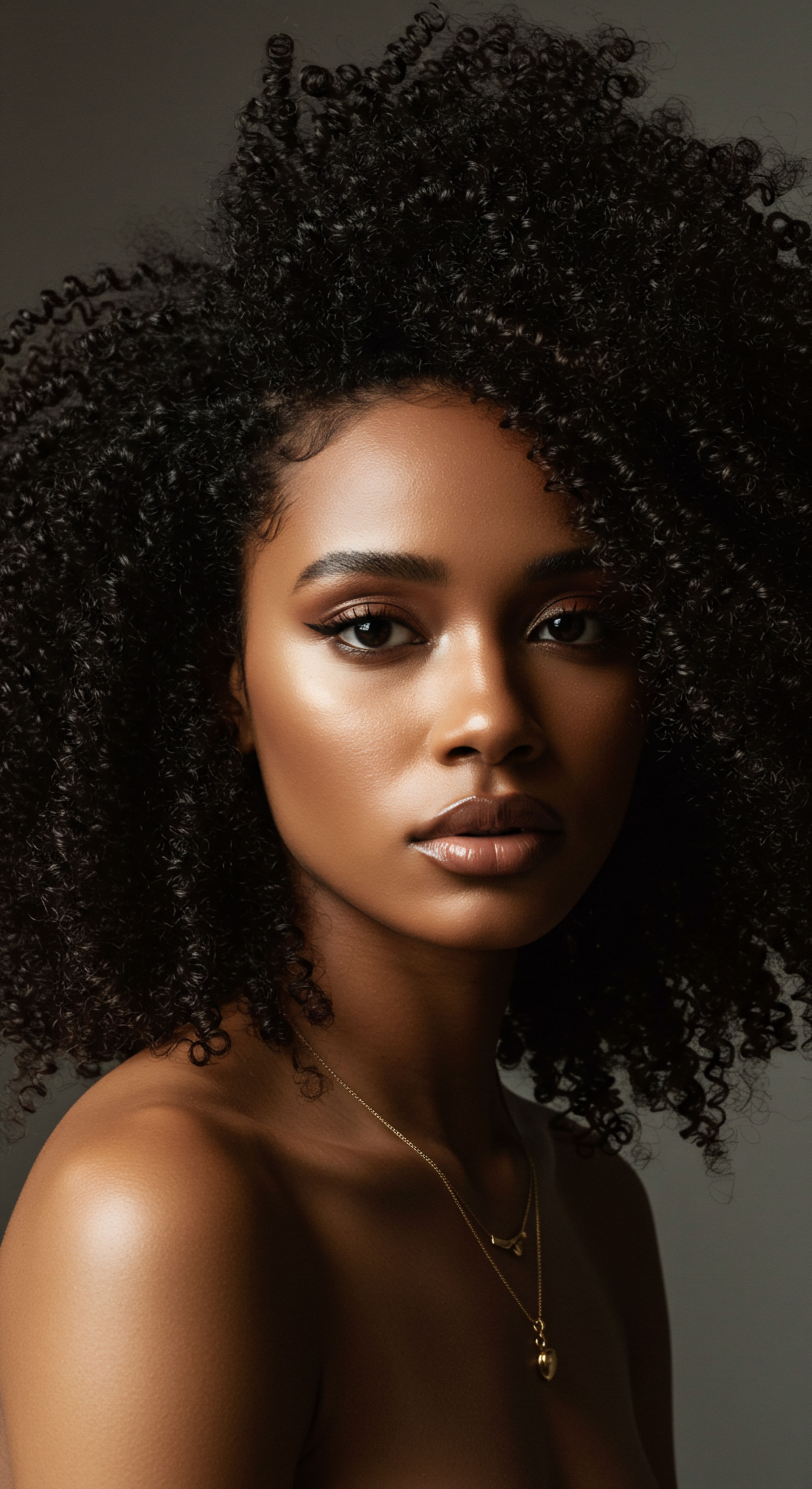
Relay
Stepping into a deeper current of understanding, we confront the multi-layered relationship between textured hair and the ambient atmosphere, where scientific insight converges with broader societal realities. Is it truly a question of inherent vulnerability, or does the broader context of environmental exposure and hair’s biological responses paint a more complex picture? The answers lie not in simple declarations, but in a nuanced exploration of structure, chemistry, and lived experience.
The unique helical structure of textured hair, characterized by its varied curl patterns, influences its physical properties in ways that warrant specific consideration when discussing environmental challenges. Each curve and coil represents a point of potential mechanical stress, and the elliptical cross-section common in many textured hair types means that the cuticle layers may not lie as flat as they do on straighter strands. This arrangement can lead to a more open cuticle, theoretically providing more opportunities for particulate matter and gaseous pollutants to settle upon the hair shaft. While hair is a non-living fiber once it emerges from the scalp, its structural integrity remains susceptible to external assaults.

Are Hair’s Structural Characteristics a Predisposing Factor?
The argument for textured hair’s increased vulnerability often rests on its physical characteristics. The cuticle, the outermost protective layer, acts as the primary shield. In textured hair, the cuticle scales can be more raised, especially at the curves of the strand, potentially creating more surface area for airborne particles to adhere. This increased surface roughness, while contributing to the hair’s volume and ability to hold style, might also allow pollutants to accumulate more readily.
Moreover, textured hair is often inherently drier and more porous than straighter hair types. This porosity implies a greater capacity for substances to enter the hair shaft, including water, products, and, critically, airborne contaminants.
The distinctive architecture of textured hair, with its often lifted cuticle and higher porosity, may present unique pathways for environmental pollutants.
Consider the effects of oxidative stress, a primary mechanism through which air pollution damages hair. Pollutants such as particulate matter, ozone, and heavy metals generate reactive oxygen species (ROS) upon contact with hair. These ROS attack hair proteins, including keratins, which are the building blocks of the hair shaft. They can also degrade the hair’s lipid content, particularly 18-methyleicosanoic acid (18-MEA), a fatty acid on the cuticle surface vital for maintaining hydrophobicity and smoothness.
When 18-MEA is lost, the hair becomes more hydrophilic, absorbing water more readily, and its surface becomes rougher, leading to increased friction and a dull appearance. For textured hair, which already battles natural dryness and often has a lower inherent 18-MEA content compared to some other hair types, this oxidative damage can exacerbate existing vulnerabilities, making strands more prone to breakage and diminishing curl definition.
A study published in the Proceedings of the National Academy of Sciences utilized transmission electron microscopy to observe human hair fibers containing varying concentrations of polycyclic aromatic hydrocarbons (PAHs), a common air pollutant. The research revealed an accelerated structural degradation of the hair fiber over time when higher PAH concentrations were present. This degradation included increased damage to the hair cortex and cuticle delamination.
While this study did not specifically differentiate by hair type, the implications for textured hair are significant. If hair is already predisposed to mechanical fragility due to its unique structure, any additional weakening from pollution-induced degradation could lead to more noticeable and severe damage.
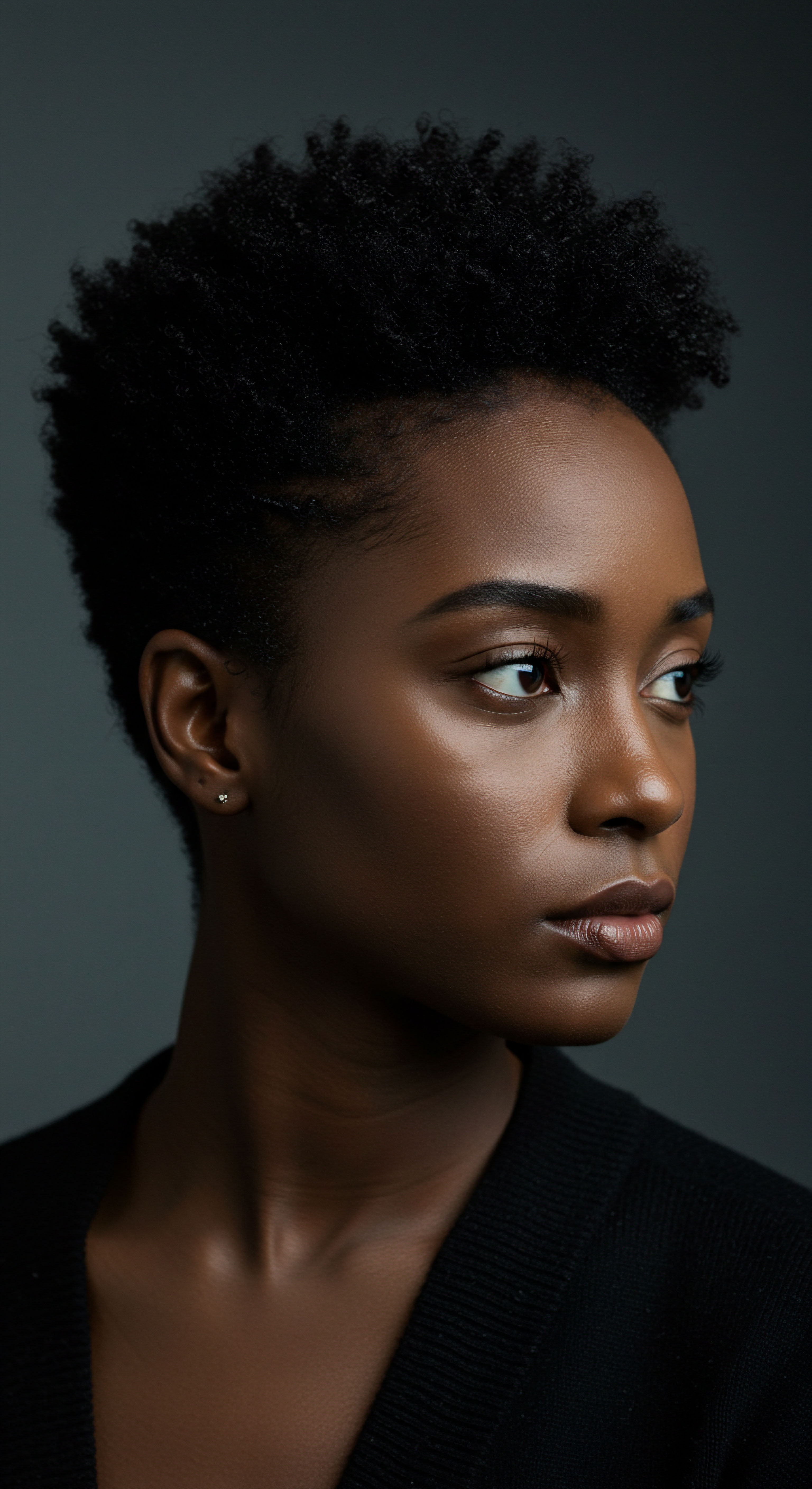
Do Societal Realities Play a Role in Exposure Disparities?
Beyond the biological aspects, a crucial dimension of this discussion lies in the social and environmental realities that disproportionately affect communities with higher populations of individuals with textured hair. Research has consistently shown that minoritized ethnic groups often experience higher levels of air pollution. A study by the National Centre for Atmospheric Science and the University of York revealed that in the UK, Chinese, Arab, and Bangladeshi communities experienced significantly higher disparities in nitrogen oxide emissions, and Bangladeshi, Pakistani, and Roma groups faced higher particulate matter emissions compared to socio-economically matched white populations. Similarly, in the United States, people of color are exposed to disproportionately high levels of ambient fine particulate air pollution (PM2.5), with nearly all major emission categories contributing to this systemic disparity.
This environmental injustice means that individuals with textured hair are, by virtue of their demographic location, frequently exposed to a greater burden of atmospheric contaminants. This heightened exposure translates into a greater cumulative assault on their hair and scalp.
| Pollutant Type Particulate Matter (PM) |
| Mechanism of Damage Induces oxidative stress; decreases hair growth proteins. |
| Observed Hair Effect Dullness, fragility, hair loss, scalp irritation. |
| Pollutant Type Ozone |
| Mechanism of Damage Oxidizes lipids and proteins; generates free radicals. |
| Observed Hair Effect Degradation of cuticle and cortex proteins, increased permeability. |
| Pollutant Type Heavy Metals |
| Mechanism of Damage Accumulate on hair, increase oxidative stress. |
| Observed Hair Effect Weakening of hair, premature greying. |
| Pollutant Type Polycyclic Aromatic Hydrocarbons (PAHs) |
| Mechanism of Damage Phototoxic; cause structural degradation, especially with UV exposure. |
| Observed Hair Effect Accelerated cortical damage, cuticle delamination. |
| Pollutant Type Pollutants inflict damage through various chemical and physical pathways. |
The long-term effects of this constant exposure can be particularly challenging for textured hair. Given its natural inclination towards dryness and its more complex structural arrangement, the added stress from pollutants can lead to increased frizz, diminished elasticity, and persistent dryness. This can then necessitate more intensive moisturizing and protective routines, creating a cycle of reactive care.
Therefore, the question of vulnerability extends beyond mere hair biology. It encompasses the sociological landscape, environmental policies, and access to resources that mitigate exposure. While textured hair itself is not inherently “weak,” the conditions under which many individuals with textured hair live and move can indeed render their strands more susceptible to the adverse effects of compromised air quality. This calls for a holistic approach that considers both targeted hair care and broader environmental advocacy.
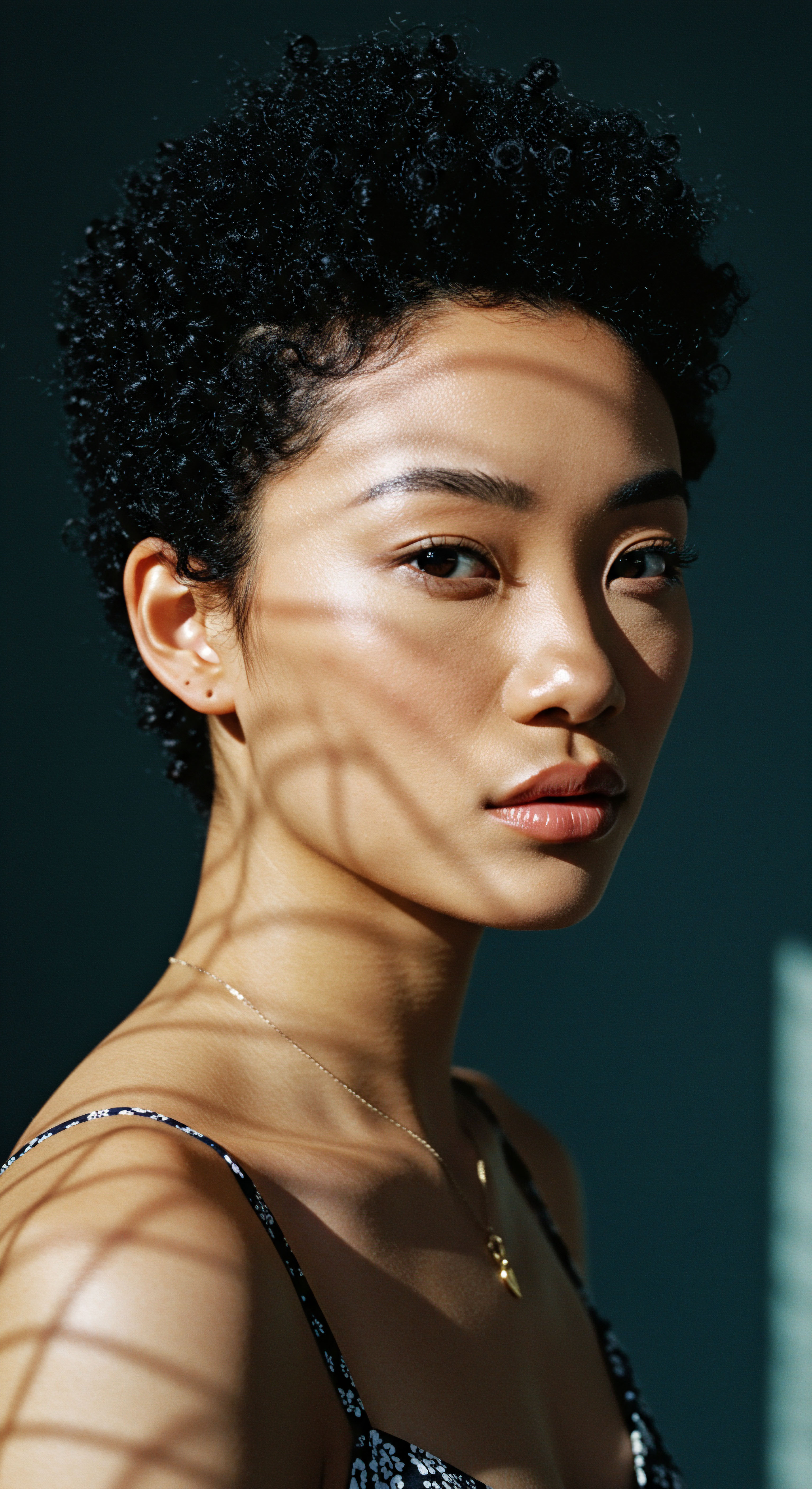
Reflection
As we consider the intricate relationship between textured hair and the air that surrounds us, a deeper appreciation for both the resilience of these unique strands and the profound impact of our environment takes root. The conversation extends beyond simple fragility, inviting us to contemplate the complex interplay of inherent structure, daily practices, and the often-unseen currents of environmental injustice. How might this broadened understanding shape our collective approach to care, and what enduring wisdom can we draw from this interplay of hair, air, and human experience?
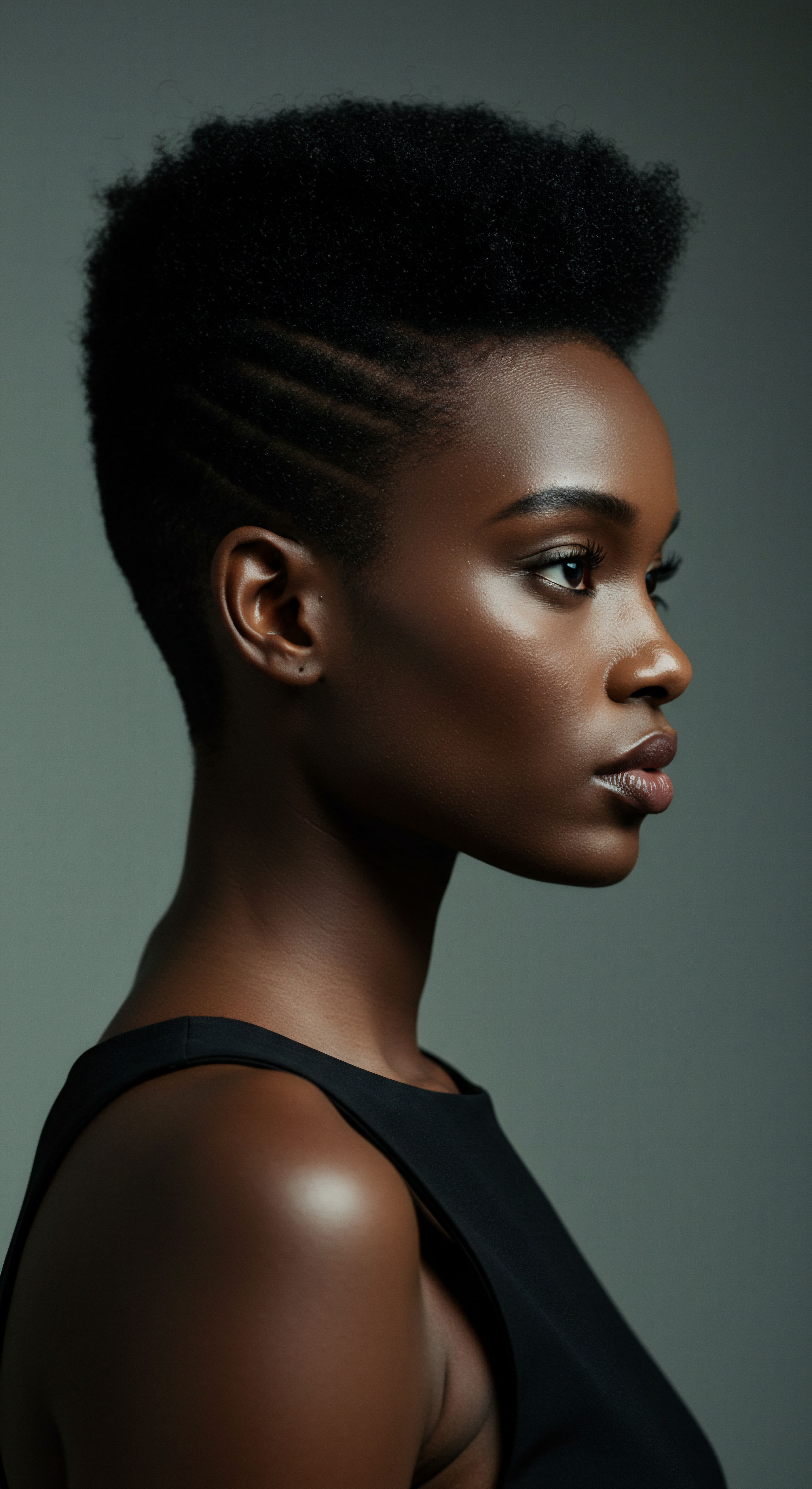
References
- The Influence of Diet, Lifestyle, and Environmental Factors on Premature Hair Greying. ClinicSearch.
- The Influence of Diet, Lifestyle, and Environmental Factors on Premature Hair Greying ❉ An Evidence-Based Approach. ClinicSearch.
- The Genomic Variation in Textured Hair ❉ Implications in Developing a Holistic Hair Care Routine. MDPI.
- The Invisible Threat to Hair and Scalp from Air Pollution. Polish Journal of Environmental Studies.
- Impact of Environmental Stressors on Hair. NYSCC.
- Is Pollution Ruining Your Hair? Learn About its Impact on Hair Health. trichology.
- Oxidative stress ❉ Insights into the Pathogenesis and Treatment of Alopecia. Journal of Ravishankar University (Part-B ❉ Science).
- Understanding Hair Loss due to Air Pollution and the Approach to Management. Martine Langsam.
- Human pollution exposure correlates with accelerated ultrastructural degradation of hair fibers. PMC – PubMed Central.
- Understanding Hair Loss due to Air Pollution and the Approach to Management.
- The Benefits of Antioxidants for Your Hair, According to a Curl Chemist. Beautycon.com.
- Human pollution exposure correlates with accelerated ultrastructural degradation of hair fibers. ResearchGate.
- Oxidative Stress in Ageing of Hair. PMC – PubMed Central.
- The Effects of Pollution on Hair Health & How to Protect Your Hair. Cultivator.
- How Air Pollution Causes Hair Loss & How to Protect It. monpure.
- Evaluation of the Ozone Effects on Human Hair Fiber ❉ A Preliminary In Vitro Study.
- Ozone interactions with human hair ❉ Ozone uptake rates and product formation. ResearchGate.
- The Ethnic Differences of the Damage of Hair and Integral Hair Lipid after Ultra Violet Radiation. PubMed Central.
- Heavy Metal Accumulation in Dust and Workers’ Scalp Hair as a Bioindicator for Air Pollution from a Steel Factory. Polish Journal of Environmental Studies.
- Animal hair as biological indicator for heavy metal pollution in urban and rural areas. Environ Monit Assess.
- Air pollution disparity in the UK ❉ Minoritised ethnic groups face higher emissions. NCAS.
- Assessment of Typical Heavy Metals in Human Hair of Different Age Groups and Foodstuffs in Beijing, China. PubMed.
- The Effects of Environmental Pollutants and Exposures on Hair Follicle Pathophysiology.
- Air Pollution Linked to Hair Loss. RT – Respiratory Therapy.
- PM2.5 polluters disproportionately and systemically affect people of color in the United States. NACTO.
- Effects of air pollution on the skin ❉ A review.